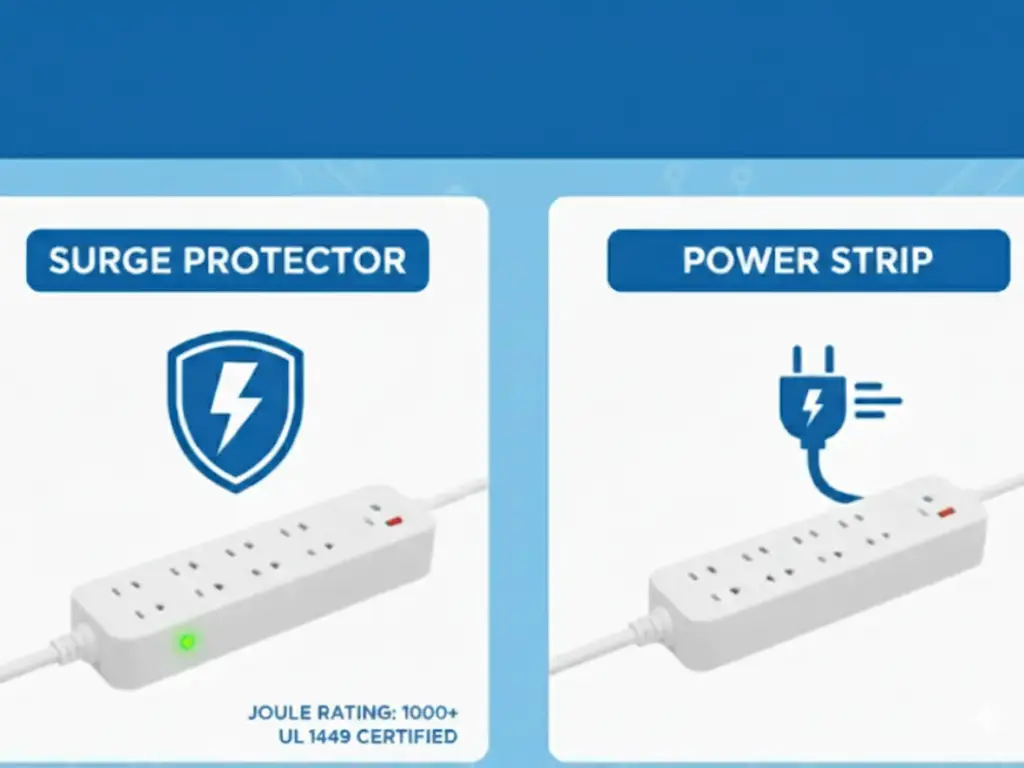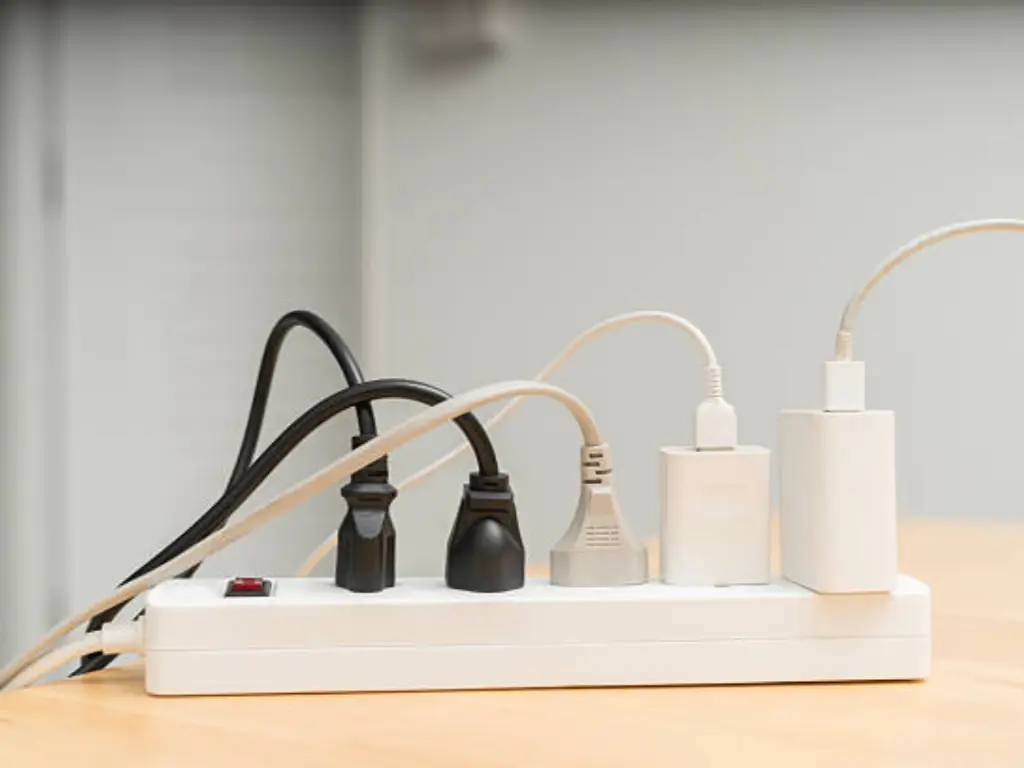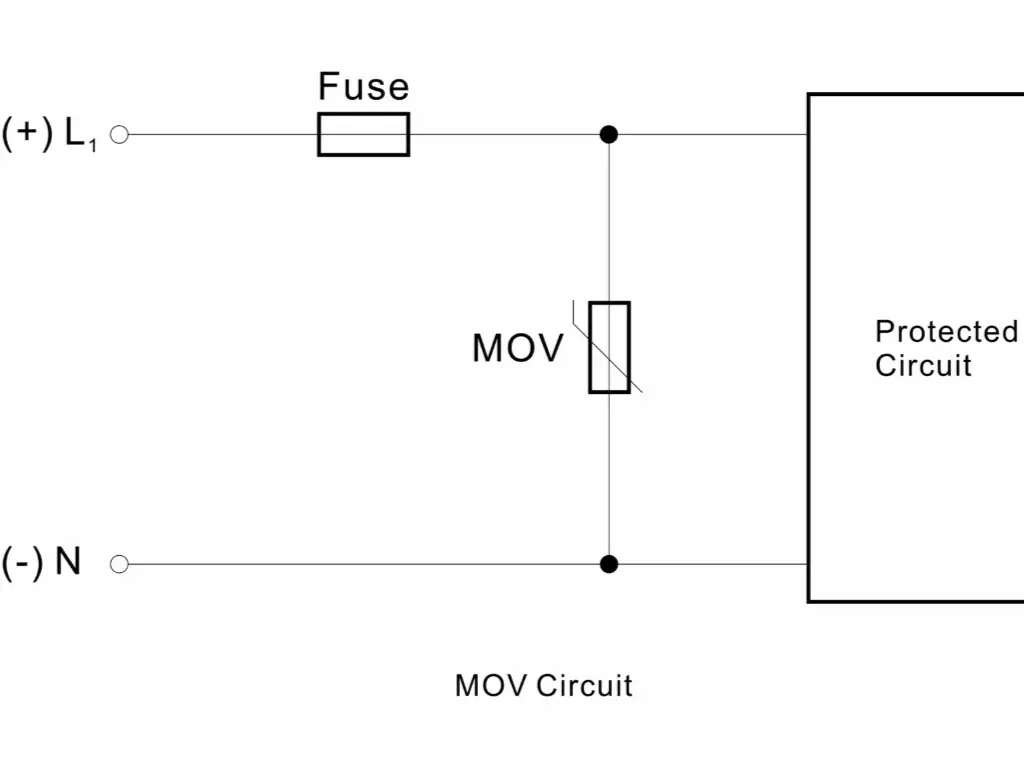Electrical safety is a priority in the modern digital world. Our refrigerators, as well as the most sensitive electronics, depend on a steady, constant power supply. However, two threats are commonly misunderstood in our electrical world: overloads and surges. Although they both may lead to serious equipment damage, there are two different issues that need different solutions.
It is important to know the main differences between overload protection and surge protection to protect not only your property but also your valuable electronic devices. This guide will give you a detailed rundown of both, starting with simple concepts and ending with professional techniques to use in industrial applications, and making your electrical system actually secure.
A Quick Comparison: Overload vs. Surge
Although both overload and surge protection are essential to electrical safety, they address quite different threats. In order to understand it, one can think of a simple water pipe. An overload is similar to attempting to push too much water (current) through the pipe over a long duration. The pipe itself becomes dangerously hot and can burst, like overloaded electrical wiring can cause a fire. A power surge is, however, similar to a sudden, violent pressure surge (voltage), a water hammer, which does not melt the pipe but can immediately destroy any fragile gauges or sensitive devices attached to it.
The first threat is excessive current, which is fought by overload protection. This happens when an electrical circuit is supplying more electrical appliances than it is rated to do. Your circuit breakers and fuses are the heroes here, and they are like safety valves; they cut off the electrical flow, so that wires do not overheat and cause electrical fires.
Surge protection, in its turn, protects against the second threat: a transient voltage or voltage spike. These are extremely rapid and strong events that are usually triggered by lightning or by power grid variations. Although a circuit breaker cannot see them, the sensitive circuit boards in your electronic devices are highly susceptible. A surge protective device (SPD) is a special shield that is used to absorb or redirect this harmful surge energy before it can cause damage that cannot be repaired to equipment.
To further distinguish these differences, the table below outlines these main differences in a nutshell:
| Feature | Overload Protection | Surge Protection |
| Primary Threat | Excessive, sustained electric current | Suddenly, an extremely brief voltage spike |
| Common Causes | Too many devices on one circuit, faulty appliance | Lightning strikes, power grid switching, large appliance cycles |
| Protective Devices | Circuit breaker, Fuse | Surge Protective Device (SPD), Surge Protector |
| Protects Against | Electrical fires, damage to electrical wiring | Damage to circuit boards and sensitive electronic equipment |
| Primary Risk | Fire hazards due to overheated wires | Instant or gradual failure of connected equipment |
Understanding Overload Protection: Preventing Persistent Current Issues
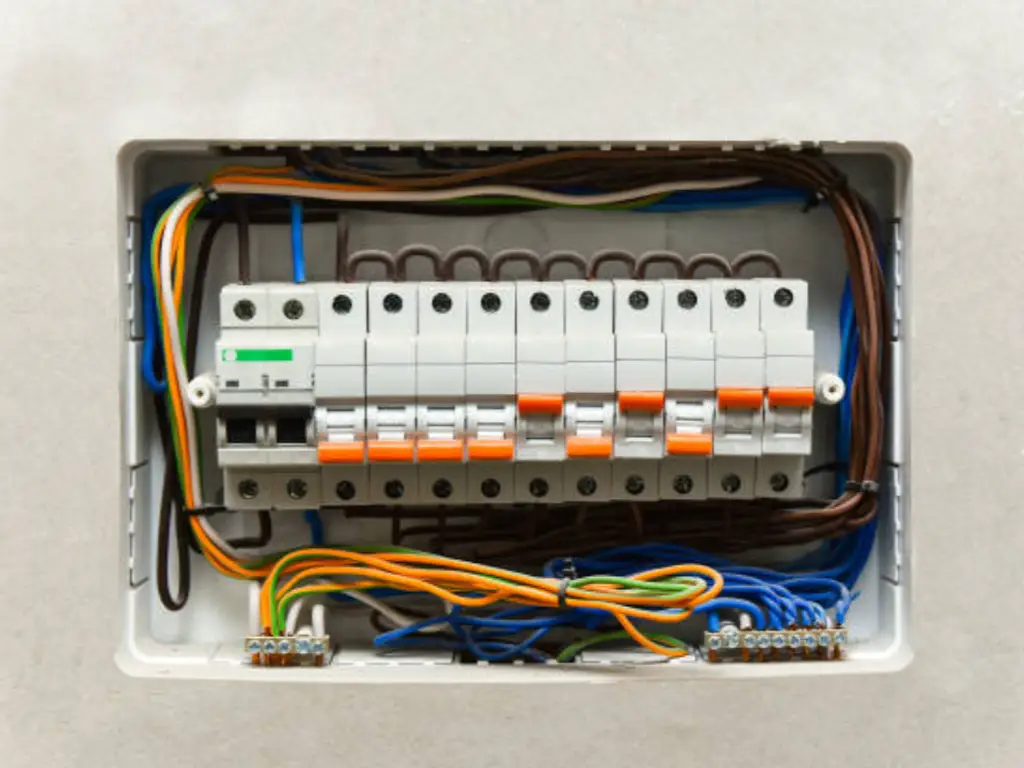
In essence, overload protection is the very guardian of the infrastructure of a building and is meant to fight a very basic yet hazardous threat: a large amount of current passing through electrical wiring over a long period of time. This is normally caused by the excessive use of high-draw electrical appliances, like air conditioners or kitchen appliances, on one electrical circuit. It may also be due to a defective appliance that uses more electric current than it is supposed to, or, most spectacularly, due to a short circuit.
When a wire is overloaded with a current that is higher than its rated current, it produces a lot of heat. This heat damages and may even melt the protective insulation of the wire and expose the live conductor. This poses a danger of arcing or direct contact with flammable materials in a wall, causing disastrous electrical fires. Overload protection is mainly aimed at fire prevention. To accomplish this, all electrical panels have one of the two types of protective devices:
- Circuit Breaker: This is a switch that can be used repeatedly and is automatic, and continuously monitors the current. It employs a thermal device (a bimetallic strip that deflects with heat to open the switch) in the case of sustained overloads or a magnetic coil in the case of the instantaneous, huge current of a short circuit.
- Fuse: A one-time, disposable device with a metal filament that is designed to melt and open the circuit permanently when a certain current is exceeded.
These are the guardians of your electrical system, and they make sure that the wiring itself is not dangerous.
Surge Protection: Shielding Electronics from Voltage Spikes
Whereas a circuit breaker guards your walls against fire, it is totally oblivious to the menace that afflicts contemporary electronic devices: the power surge. A surge, sometimes called a transient voltage or voltage spike, is a very short but huge rise in voltage in your power supply. These events, lasting microseconds, add a dose of high voltage that is disastrous to the sensitive microprocessors and circuit boards of modern sensitive electronics.
These hazardous voltage spikes have two sources. The most potent external sources are the ones that involve such events as direct lightning hits that may cause huge energy to be introduced to the power grid and switching of the grid by the utility companies. But many of the surges are internally produced. Even the mere on/off cycling of a large appliance with a motor, such as a refrigerator or air conditioner, can produce smaller, but harmful, voltage surges on your home circuits. These small surges repeated over time can wear out electronic components, causing unexplained glitches and early equipment failure.
Here is a Surge Protective Device (SPD) that comes to its rescue. The Metal Oxide Varistor (MOV) is the main technology contained in a typical surge protector. MOVs are inactive during normal operation. However, when they sense that there is too much voltage, their internal resistance falls within nanoseconds, providing a safe path to redirect the dangerous surge current to the ground wire. They basically take the hit and safeguard the attached equipment.
Strategy for Critical Systems & Industrial Applications
To homeowners, the difference between overload and surge protection is simple. To engineers tasked with the electrical system of critical infrastructure, including data centers and photovoltaic (PV) farms, 5G telecommunication hubs, and more, the task of creating a comprehensive protection strategy is a much more complicated and critical engineering task. An effective overcurrent safety foundation should be established to provide a perfect foundation on which an advanced overvoltage mitigation strategy can be implemented. This section explains the professional-grade method of achieving complete system integrity against persistent and transient threats.
Ensuring Foundational Safety: How to Audit Overload Protection
Even prior to the consideration of a single surge protective device, the absolute integrity of the underlying overload protection must be verified. This is a non-negotiable foundation of electrical safety. A good audit is much more than just verifying that a circuit breaker exists; it is an intense evaluation of the design and compliance of the system. The initial critical gate is the appropriate sizing. Each breaker or fuse should be carefully selected for the wire gauge and expected load of its circuit, and must conform to such standards as the National Electrical Code (NEC) in North America. An oversized breaker is a potential fire hazard, and an undersized breaker is a nuisance tripping and downtime hazard.
Then there is selective coordination, which is an important design feature of any large facility. This means that when a fault occurs, only the breaker directly upstream of the fault trips, isolating the fault without a cascading, facility-wide blackout. Lastly, professionals should check the interrupting rating of the breaker (AIC). This rating assures that the device will safely dissipate the huge electric current of a worst-case short circuit without catastrophic failure. These careful tests provide a solid foundation of the fundamental protection of the system against excessive current, which can then be used as a basis on which an enhanced surge protection plan can be implemented.
A Professional’s Guide to SPD Selection (Type & Application)
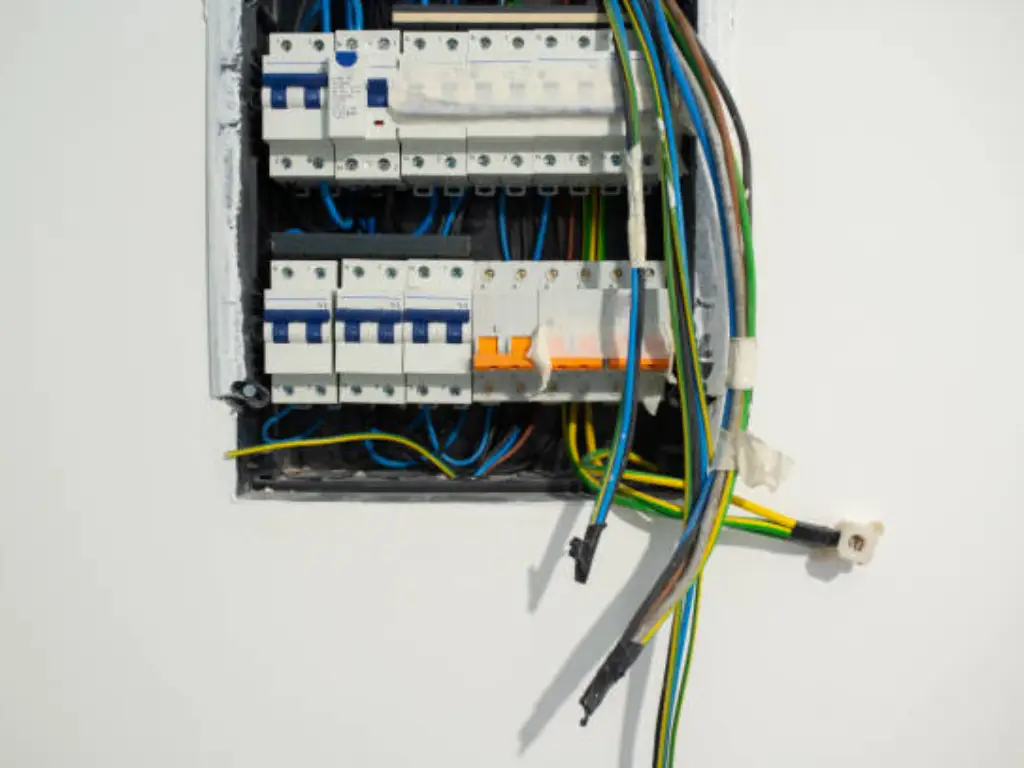
An effective surge protection strategy is not a device, but a coordinated system. The aim is to develop areas of protection that control the surge energy of a transient voltage event as it propagates through a facility. This is done by layered defense with various SPD Types. Type 1 SPDs are the initial line of protection and are installed at the main service entrance to deal with high-energy external surges, such as direct lightning strikes. Type 2 SPDs are workhorses, which are fitted in distribution panels downstream to clamp the residual voltage of external events and, most importantly, to counter internally generated surges. Lastly, Type 3 SPDs, which are usually at the point of use, offer the last and finest protection to the most sensitive electronics. The most popular manufacturers, such as LSP engineer, designed optimized Type 1+2 combination units to make them easier to design and perfectly coordinated.
Once the type is determined by location, specifications must be tailored to the application:
- For PV & ESS Systems: These demand DC-specific SPDs rated for the unique high-voltage characteristics of solar arrays to protect the central inverter, the heart of the system.
- For Telecom & 5G Base Stations: The priority is protecting sensitive data lines and transceivers. This requires SPDs with extremely fast response times and very low clamping voltages to prevent damage to delicate circuit boards.
- For Industrial Automation: Here, the primary threat is often internal transient voltage surges from motors and variable frequency drives. SPDs must be robustly designed to withstand this harsh, repetitive electrical environment.
Beyond the Datasheet: What We Deliver as Your SPD Partner
- Fire protection design, 5-year warranty
- Top tier raw materials: MOV from LKD®, GDT from Vactech®, etc.
- 300,000 pcs/year
Being a specialist SPD manufacturer, we feel that a datasheet only gives half the picture. The partnership behind the product is real reliability. This is what we provide to our distributors, integrators, and OEM customers:
- Customization and Certification: Standard products are not always suitable for a project. We offer customization all the way to the end, including design and private labeling. More importantly, we handle the TUV, CB, and CE certification procedure on your behalf, making your way to the market much easier.
- Supply Chain Stability: Our high-capacity manufacturing and efficient ERP system mean stable, predictable delivery. We will guarantee open lead times so that you can plan your projects and inventory with certainty.
- Long-Term Warrant: We back up our engineering with a 5-year warranty. This minimizes your long-term risk and demonstrates the longevity of our products.
- Flexible Policies: We work under a No MOQ (Minimum Order Quantity) policy. This allows you to order what you need, when you need it, giving you the most agility and the least inventory expense.
Why You Need Both: Building a Complete Electrical Defense
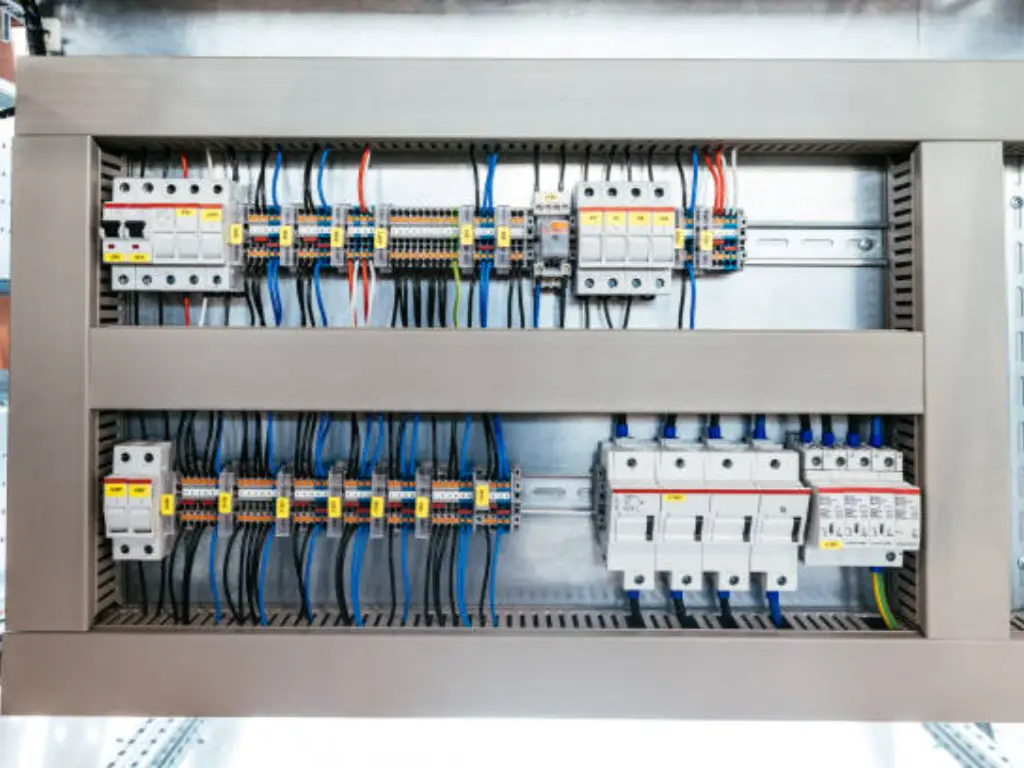
Now it should be obvious that overload and surge protection are not synonymous; they are complementary elements of a comprehensive electrical protection scheme. A circuit breaker is similar to the strong outer wall of a castle, which prevents the whole structure from being burnt down. A surge protector is the equivalent of the royal guard within the castle, guarding the royal family and their treasures-your precious electronics. This balance between outer defense and inner guard becomes clearer once you know how surge protection works.
You may end up in a disastrous fire without the circuit breaker. In the absence of surge protection shields, you expose yourself to a continuous loss of costly and vital electrical appliances. Both are an absolute necessity in a safe and resilient electrical system.
Key Takeaways for Homeowners and Professionals
In short, the following are the key points to remember when it comes to full electrical protection:
- Homeowners: Learn that the main purpose of your circuit breaker is to prevent fires (overload protection), whereas the task of a surge protector is to protect your electronics against voltage spikes (surge protection). Without the two, your house is not completely safe. Look at your panel, and make sure your precious electronics are connected to a quality, certified surge protector, not a mere extension cord or power strip.
- To Professionals: The ability to offer a comprehensive electrical protection solution is central to system reliability and client confidence. This implies that one should learn the basics of overload protection and apply a multi-layered approach to surge protection. When choosing SPDs on critical projects in PV, telecom, or industrial applications, it is important to consider more than the joule rating and to find a specialist manufacturer such as LSP that can offer certified high-performance devices, strong technical support, and a dependable supply chain.
